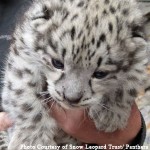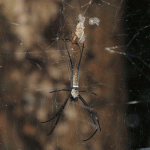![576px-Livistona_mariae[1]](https://scienceillustrated.com.au/blog/wp-content/uploads/2012/03/576px-Livistona_mariae1.jpg)
The Central Australia Cabbage Palm community, located in Palm Valley, Finke Gorge National Park, Northern Territory. Image: Albinfo via Wikimedia Commons
An ancient plant may have been carried to Palm Valley by humans.
An isolated community of Central Australia Cabbage Palms (Livistona mariae) found in central Australia’s Palm Valley was believed to be a remnant of a great Gondwanan rainforest that perished around 15 million years ago when Australia’s climate became drier.
A new study published in the Royal Society of London’s journal Proceedings B suggests that they are almost identical genetically to a small population of palms that occurs near Katherine, 1,000 kilometres to the north.
The palms in Katherine were previously believed to belong to another species, L. rigida. But according to Professor David Bowman of the University of Tasmania, the palms are basically brother and sister in terms of similarity, with genetic divergences due to slow mutation of their DNA.
“Calculations suggest that the seeds of the Palm Valley palms were moved away from their northern relatives as recently as 15,000 years ago,” he said.
The palm shoots of Livistona mariae are eaten by Aboriginal people and the bark is used for weaving. Bowman said it is possible the Aboriginal people, who have been in Australia for 30,000 years, carried the palm seeds to Palm Valley.
He described Palm Valley as being botanically one of the most intriguing places in Australia. “Palm Valley is something of a mystery, given the weird plants that grow there; it is thought of as a throwback to the time Australia was covered in a rain forest.
“We have no idea if (or indeed why) Aboriginal people did indeed transport the palm seeds, but birds eating the seeds and crossing 1000 km during a period drier than now seems far more unlikely an explanation as human transportation.”
The study highlights the power of genetic analysis to reconstruct ancient migrations, with often surprising results.
– Laura Boness
Source: University of Tasmania






